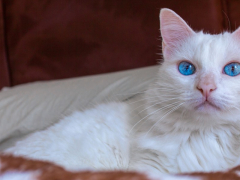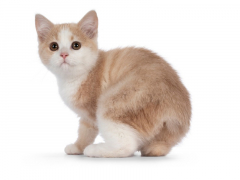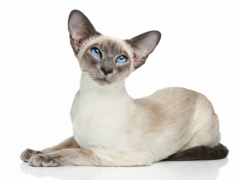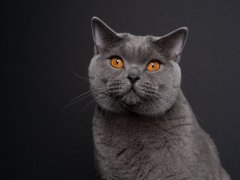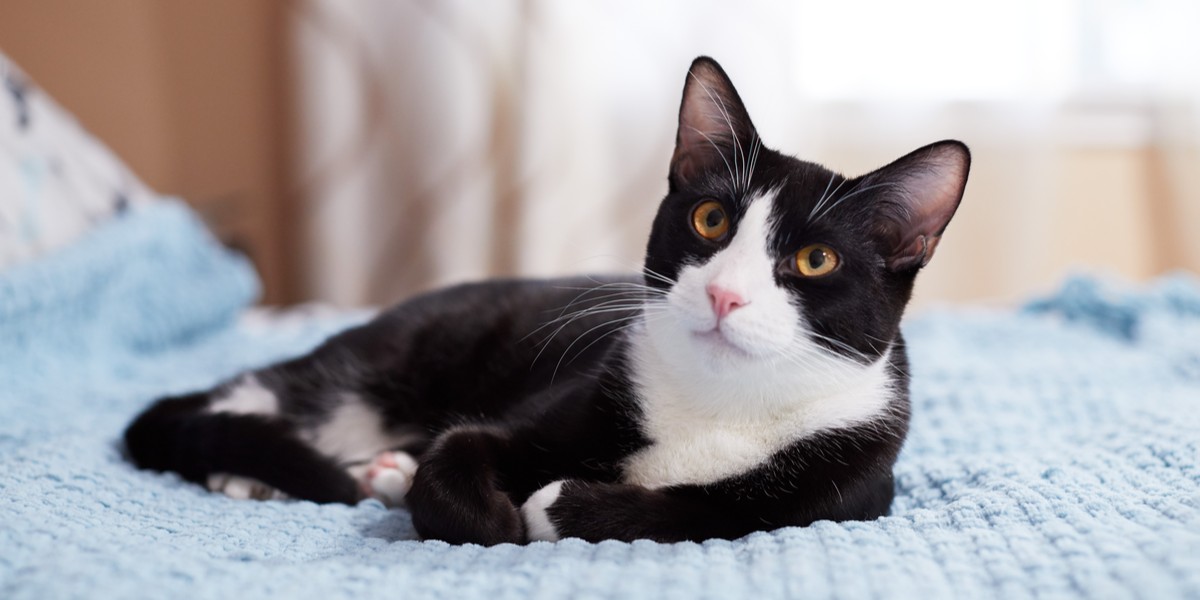
When you hear the word “tuxedo” you probably picture an elegant black-tie affair – a regal dinner attended by gentlemen in crisp black suits and ladies in flowing ball gowns.
It’s probably safe to say you don’t picture a cat.
That being said, it isn’t much of a stretch to see how tuxedo cats got their name. These cats are the picture of formal elegance, having a solid black coat with white fur on the throat, chest, paws (socks), and belly. Some tuxedo cats even sport a black mustache for an added touch of dashing charm.
Perhaps the rarest and most handsome of all is the tuxedo cat “wearing” a furry bow tie. Known as “black ties,” these charming felines are though to be lucky charms, particularly in terms of wealth and good fortune.
Also Read: Most Popular Tuxedo Cat Names
Why Are Black and White Cats Special?
Like all cats, the average tux generally lives somewhere between 10 to 20 years when kept indoors. Outdoor cats, on the other hand, tend to live much shorter lives averaging about 5 years.
When it comes to personality, many tuxedo cat owners comment that their cats are almost dog-like in nature. These good-natured felines are friendly and affectionate – they’ve even been known to get along well with other pets (including their arch-nemesis, better known as the canine).
It’s important to remember that tuxedo cats are not a breed in their own right, so it’s difficult to say whether all tuxies will fit this description.
Something all tuxedo cats DO have in common is, of course, their unique appearance.
Much like Calico and Tortoiseshell cats, Tuxies owe their bicolor coat to genetics. Though it was long believed a bicolor cat was the result of a “sluggish” pigment cells, researchers now have a different theory that explains the tuxedo cat’s dapper coat coloration.
The previous theory suggested that slow pigment cells weren’t able to reach all parts of a tuxedo kitten embryo before it was fully formed. Today, however, researchers understand that pigment cells multiply and move randomly throughout embryo development – they don’t seem to follow any particular set of instructions when it comes to coat color.
One thing calicos and torties have in common that tuxies don’t is that most are female. You’re just as likely to find a female tuxedo cat as a male.
Tuxedo cats can be found in a variety of different breeds as well, including Maine Coon, British Shorthair, Scottish Fold, American Shorthair, and Turkish Angora. Tuxies can be long haired or short haired, purebred or mixed breed.
Of course, we know breed plays more of a role than coloring when it comes to the personality traits of a cat. But, much like Tabby and Ginger cats, tuxedo cats seem to be friendlier and more attached to their owners than other felines.
Though they may not be particularly rare, if you’re lucky enough to find a black cat with a tuxedo color pattern at your local animal shelter, don’t pass it by!
Personality And Temperament
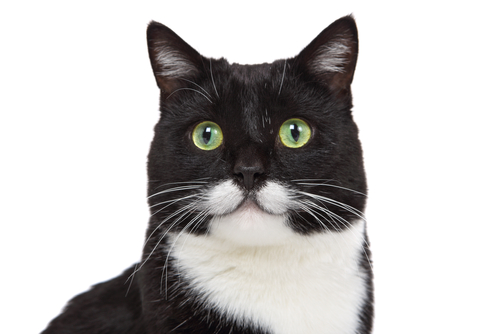
According to many cat parents and tuxedo cat lovers, these friendly felines have an easy-going temperament (let’s call it tuxitude!). They have also been described as playful, talkative, loyal, and dog-like.
Tuxedo kittens are born wearing formal attire, looking as handsome as can be. Even as kittens they are friendly, easy-going, and more laidback than other kittens. Most tuxedo cats are not aggressive and tend to get along well with other household cats.
Another interesting tidbit about tuxedo kittens is that they tend to develop more quickly than other cats. It usually takes kittens one to two weeks to open their eyes after birth, but newborn tuxies open their eyes an average of 24 hours earlier than other cats.
Tuxedo Cat Appearance
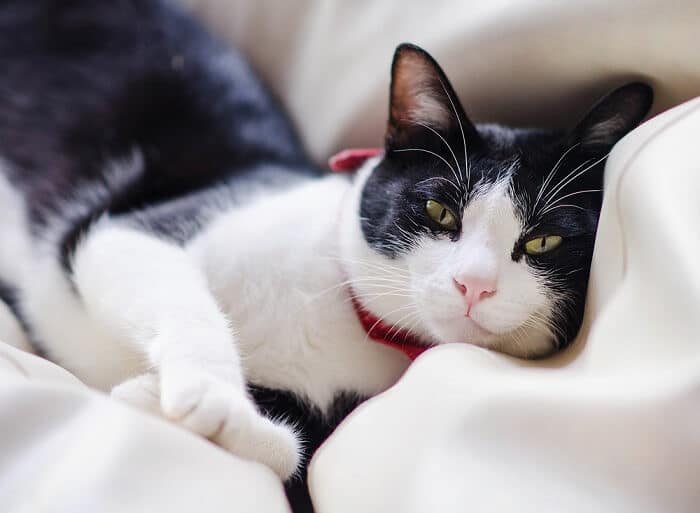
A tuxedo kitty can also be described as a bicolor cat. Though tuxedo cats don’t have to be all black and white, they must have the piebald coloration to be included in the category.
Tuxedo cats have a coat that is typically one color with various markings of another color (usually white patches). Most commonly, tuxies exhibit white paws, white chest, white whiskers, and a white belly.
This coloration has been linked to the white spotting gene. As demonstrated with the tuxedo pattern, white spotting can take many different forms ranging from a single spot of white on an otherwise solid coat to the mostly white pattern seen in the Turkish Van breed.
Though you’re probably most familiar with tuxedo cats having short hair, they can have long hair as well. This coat pattern is a genetic characteristic that can affect any multi-colored breed – even breeds known for their distinct appearance like the Norwegian Forest Cat, Persian cat, and the Manx.
Famous Tuxedo Cats
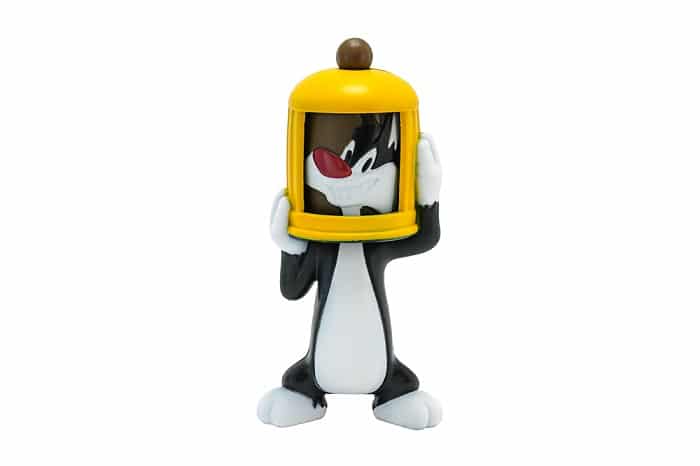
Sylvester the Cat from Looney Tunes
As you may already know, the ancient Egyptians worshipped cats. In fact, several ancient Egyptian goddesses were depicted as cats – think Bast (also known as Bastet). Because cats were so highly revered in Egyptian culture, they were frequently pictured in hieroglyphics and on royal tombs.
What you may not know is that about 70% of the cats depicted in Egyptian art were tuxedo cats!
Some of the most famous tuxedo cats in history are Sylvester the Cat from Looney Tunes’ Tweety and Sylvester, Dr. Seuss’ Cat from The Cat in the Hat, and Felix the Cat from the 1920s silent film era. Though the cats themselves didn’t become famous, you may be interested to know that a few familiar names owned tuxies – Shakespeare, Beethoven, and Sir Isaac Newton.
In T.S. Elliot’s Old Possums Book of Practical Cats (1939), a collection of poems about feline psychology, tuxedo cats are referred to as Jellicles. This name is still used today.
In fact, you may already know the name of one: Mr. Mistoffelees.
Originally a character in Elliot’s book, Mr. Mistoffelees was depicted as a young black-and-white cat with magical powers in Andrew Lloyd Webber’s musical Cats. This particular tux is known for his flashy charm and sassy nature along with his inability to fully control his magical powers.
Other tuxedo cats you may be familiar with include Bill Clinton’s cats Socks (a tux-wearing First Cat fits right in at the White House, don’t you think?) and Simon, a chubby tuxedo cat who was awarded a medal in WWII for protecting limited food supplies aboard a warship in the middle of the ocean.
Owned By A Tuxedo Cat? Here Are 14+ Facts You’ll Love
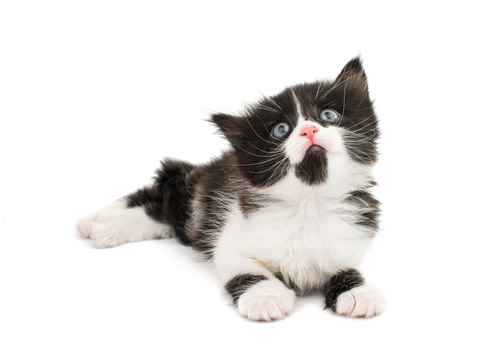
- It’s rumored that tuxedo cats become essentially invisible on the vernal equinox – maybe this is why they are said to have magical powers!
- Tuxies are the strongest swimmers of all domestic felines, but heaven help the human who tries to get them into the water.
- Tuxedo cat owners have also been known to describe their cats as more intelligent than cats with any other coat pattern. Some say tuxies are up to 200% smarter than other cats!
- Tuxies bring you luck. Apparently numerous lotto winners are owned by these dapper felines.
- They form strong attachments with their owners, and they love to cuddle.
- Tuxedo cats owned by Beethoven, Sir Isaac Newton, and Shakespeare (which may attest to their intelligence).
- Stan the tuxedo cat made headlines in 2012 during municipal elections. He was the mayoral candidate from Halifax, Canada, representing the Tuxedo Party.
- Tuxies have been in the White House! President Clinton owned a tux named Socks.
- Tuxedo cats are the only felines allowed in at performances of the metropolitan area because they’re always in black tie.
- More than 70% of the cats seen in Egyptian royal tombs are tuxedo cats.
- Talk about lucky! A tuxedo named Sparky inherited over $6 million from his owner in 1998.
- The mustached tuxedo is infamously called the “kitler,” while another variation, with white around the chin and nose, is called the masked tuxedo.
- Roderick, a tuxedo, is the only cat to climb Mt. Everest.
- Tuxedo kittens open their eyes 24 hours before a regular cat and they have a lifespan of 10 to 15 years.
If you’re lucky enough to be owned by a tuxedo cat, congrats! Now you know a little more about your feline friend and where his unique coloration comes from.
Wish you could learn more about the genes that make your cat special? Cat DNA testing could be the answer. Click here to read our review of the Basepaws cat DNA test kit.
